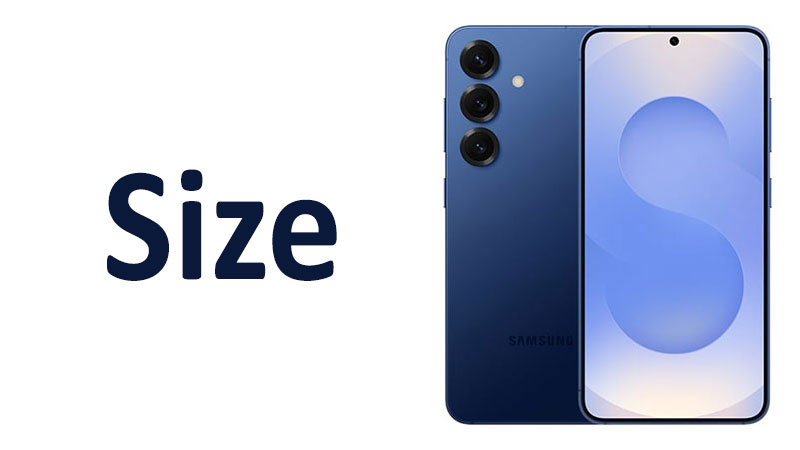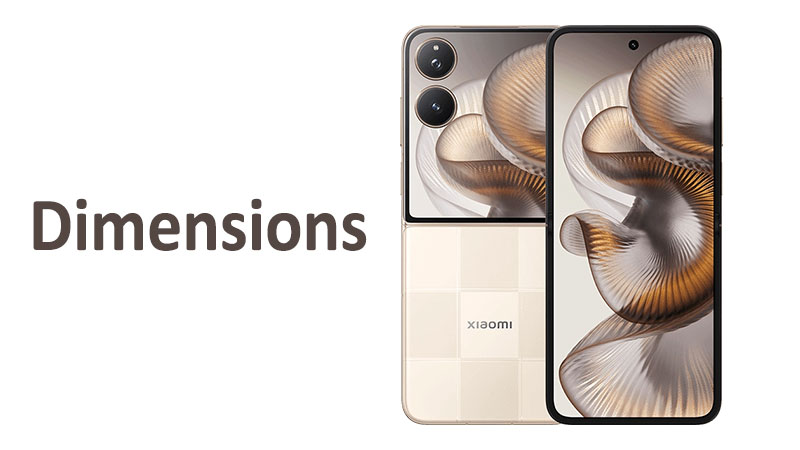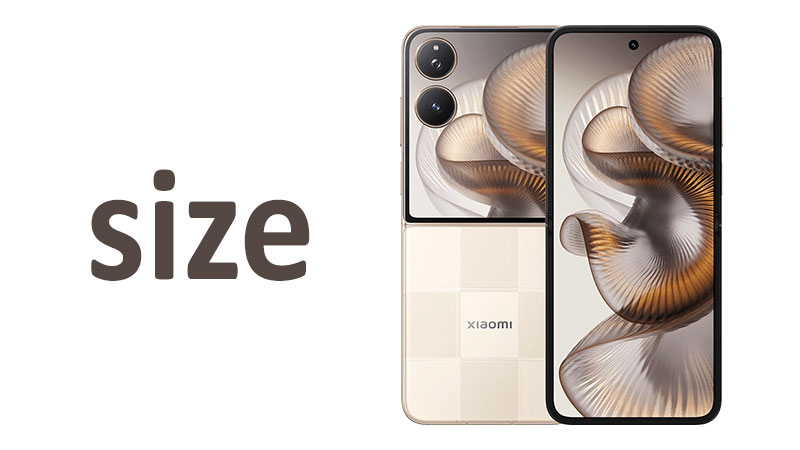The Samsung Galaxy S25 size is a pivotal factor for many smartphone enthusiasts. The device’s physical dimensions and screen measurements dictate usability and comfort. Understanding these specifications is essential before making a purchase decision. This detailed analysis covers the rumored dimensions, screen size, and vital comparisons. We will explore how the Galaxy S25 standard model fits into the current flagship landscape. Its form factor determines everything from pocketability to one-handed operation.
Analyzing the Samsung Galaxy S25 Size and Dimensions
The Samsung Galaxy S25 is anticipated to maintain its status as a compact flagship device. Leaked specifications suggest a refined and sleek form factor. The design prioritizes ergonomic comfort without sacrificing screen immersion. These dimensions represent a careful balance. Samsung aims to satisfy users who dislike large, unwieldy smartphones.
The rumored core specifications are critical for prospective buyers. The screen size is expected to measure 6.2 inches diagonally. This screen offers a substantial viewing area. The overall physical dimensions are reported as 146.9 x 70.5 x 7.2 mm. These measurements reveal a noticeably thin and manageable device. This compact design philosophy carries forward from previous Galaxy generations.
Deep Dive into the 6.2-Inch Dynamic AMOLED Display
The display is the primary interaction point for any modern smartphone. The Galaxy S25 features a rumored 6.2-inch screen size. This size is generally considered the sweet spot for many users. It balances immersive media consumption with effortless one-handed use.
The display utilizes a Dynamic AMOLED panel. This technology ensures vibrant colors and deep, true blacks. Its high resolution provides crisp and clear visuals. The effective screen area is approximately 94.4 cm². This number tells an important story about the phone’s design.
The screen-to-body ratio is notably high, around 91.1%. This figure indicates extremely thin bezels surrounding the display. A high ratio maximizes the usable screen real estate. It ensures that the physical device size remains compact. Users get more screen without the phone feeling excessively large. This design choice is crucial for the overall user experience.
Specialized Display Comparisons
The 6.2-inch size is identical to the preceding Galaxy S24 model. Therefore, Samsung focuses its innovation on bezel reduction. The S25 achieves a higher screen-to-body ratio than its predecessor. This is achieved by shrinking the borders around the screen. Competitors often offer displays slightly larger than this size. For instance, some competitor phones might push past 6.3 inches. However, the S25 prioritizes comfortable width for superior grip.
The display’s aspect ratio contributes significantly to its usability. It is expected to remain tall and narrow, following recent trends. This shape is ideal for social media feeds and vertical content. It also makes two-app multitasking more effective.
Pros and Cons of the 6.2-Inch Screen
There are several advantages to choosing this screen size. First, it promotes excellent portability. The phone easily slides into pockets and small bags. Second, it facilitates simple one-handed operation. Most users can reach all corners of the screen. Third, it often results in better pixel density. This leads to a visibly sharper image quality.
However, the 6.2-inch display also presents some drawbacks. The screen is less ideal for professional video editing or gaming. The smaller canvas provides less room for on-screen controls. Likewise, prolonged movie watching might feel less cinematic than on an Ultra model. This is the trade-off for a truly compact form factor.
Analyzing the Physical Dimensions: 146.9 x 70.5 x 7.2 mm
The physical dimensions are the external measurements of the Galaxy S25. These specs are 146.9 mm tall, 70.5 mm wide, and 7.2 mm thick. These figures confirm the S25 as one of the sleekest flagships available. The precision of these dimensions is essential for case manufacturers. Consumers must also consider them for long-term comfort.
The height (146.9 mm) ensures it does not feel too long in the hand. The width (70.5 mm) is the most critical ergonomic measurement. A width below 71 mm is universally praised for being comfortable to hold. This narrow profile minimizes hand strain during extended use.
The thickness (7.2 mm) is perhaps the most striking specification. This measurement is exceptionally thin for a modern smartphone. Many current flagships hover around 7.6 mm or even 8.0 mm. This slender profile gives the S25 a very premium and minimalist feel. It significantly contributes to the perception of a compact and light device.
Ergonomics and One-Handed Operation
The combination of the narrow width and modest height enhances ergonomics. Users can confidently use the phone without fear of dropping it. The design is perfect for typing or browsing while standing. Transition words like therefore, consequently, and thus highlight the connection to comfort. This makes the S25 an excellent choice for daily commuting.
Buyers should note the effect of the 7.2 mm thickness. A thinner phone often feels lighter and more elegant. However, it can sometimes feel sharp or less substantial to grip. The thinness is a major selling point for those prioritizing pocket space. It allows the phone to slip seamlessly into tight jeans pockets. Furthermore, a thin design is intrinsically linked to modern aesthetic appeal.
Pros and Cons of the Compact Dimensions
The compact dimensions offer several clear advantages. The main benefit is superior portability and pocketability. The phone is also easier to manage for users with smaller hands. The aesthetic is incredibly streamlined and modern due to the thinness. This sleek build screams premium design and high engineering quality.
However, the small size presents inevitable challenges. A 7.2 mm thickness leaves less internal space for components. This potentially affects the battery capacity. A smaller battery means shorter battery life between charges. Moreover, a reduced volume complicates thermal management. Powerful processors need more space to dissipate heat efficiently. Therefore, users may experience slightly higher temperatures during intense use.
Important Considerations for the Buyer
Any prospective buyer must weigh size against features. The Galaxy S25 size makes certain compromises necessary. Battery life is the primary concern with such a thin design. Samsung must achieve remarkable optimization to maintain acceptable endurance. Reviewers will pay close attention to this specific metric.
The size also impacts the camera setup. A 7.2 mm thickness limits the size of the camera sensors. Larger sensors capture more light and produce better photos. Samsung likely uses specialized, slimmed-down camera modules. This ensures high-quality optics without sacrificing the sleek build.
Buyers who value massive batteries and advanced cooling should look at the Ultra model. The standard S25 is for the user who prioritizes comfort, style, and portability. It is the ideal device for casual users and minimalists. The phone is designed to be felt as little as possible in a pocket.
Specialized Comparison: Galaxy S25 vs. Predecessors
Comparing the Galaxy S25 size to previous generations reveals Samsung’s design philosophy. The company champions compact comfort for its standard flagship. Iterative changes, though small, result in noticeable improvements. We compare the S25 with the S24 and S23 models.
Galaxy S25 vs. Galaxy S24 Dimensions
The Galaxy S24 featured dimensions of 147.0 x 70.6 x 7.6 mm. The S25 (146.9 x 70.5 x 7.2 mm) shows subtle but important shifts. It is slightly shorter, slightly narrower, and significantly thinner.
The difference in height (0.1 mm) and width (0.1 mm) is negligible. This confirms that the screen size is identical at 6.2 inches. However, the 0.4 mm reduction in thickness (from 7.6 mm to 7.2 mm) is substantial. This change represents a major engineering feat. It suggests improvements in battery and component density. The S25 feels noticeably sleeker and more streamlined than the S24. This evolution reinforces the S25’s position as a truly compact phone.
Galaxy S25 vs. Galaxy S23 Dimensions
The Galaxy S23 was renowned for its highly compact dimensions. It measured 146.3 x 70.9 x 7.6 mm with a 6.1-inch screen. The S25 is 0.6 mm taller and 0.4 mm narrower than the S23. It is also 0.4 mm thinner.
The S25 gains a larger screen (6.2 inches vs. 6.1 inches). Yet, it manages to be narrower than the S23. This is primarily thanks to improved bezel technology. The height increase is necessary to accommodate the extra 0.1 inch of screen space. The consistent reduction in thickness across generations is noteworthy. This trend proves Samsung’s commitment to ultra-thin design. Buyers moving from the S23 will experience a slightly taller, thinner phone. It will offer a more expansive viewing experience due to the larger screen.
Comparison Against Key Competitors
Understanding the Samsung Galaxy S25 size requires context. Its dimensions must be measured against its primary rivals. The standard model competes directly with the latest standard iPhone and Google Pixel models. These comparisons highlight Samsung’s unique focus on compact form.
Galaxy S25 vs. Flagship iPhone Standard Model
The standard iPhone models traditionally have a different design philosophy. They often feel slightly wider and heavier than their Galaxy counterparts. For example, a recent standard iPhone measured around 147.6 x 71.6 x 7.8 mm.
The Galaxy S25 (146.9 x 70.5 x 7.2 mm) is shorter, narrower, and significantly thinner. The difference in width (over 1 mm) is key for ergonomic comparison. The S25 offers a much more comfortable grip. Its 7.2 mm thickness contrasts sharply with the iPhone’s typically thicker profile. The S25 is the better choice for users prioritizing sleekness and one-handed comfort.
The iPhone often utilizes a slightly smaller screen size. This size difference sometimes makes the S25 display feel more spacious. Overall, the S25 targets the user who finds the current iPhone too boxy. It provides a more elegant and rounded feel in the hand.
Galaxy S25 vs. Flagship Google Pixel Standard Model
Google’s standard Pixel models are generally larger than the S25. A recent Pixel device measured approximately 150.5 x 70.8 x 8.9 mm. These dimensions make the Pixel a much bulkier device.
The Galaxy S25 is substantially shorter (over 3 mm) and much thinner (1.7 mm difference). This is a vast difference in physical size and feel. The Pixel’s added thickness often houses a larger battery. Therefore, the Pixel typically provides superior battery life.
The S25 is designed to be the pocket companion. The Pixel is better suited for users who prioritize battery longevity above all else. This comparison clearly defines the S25’s niche. It is the top option for a truly compact Android flagship. The S25 provides premium features in a highly manageable physical package.
Detailed Review of Size Aspects
We must now review the size aspects in a more detailed, interconnected manner. The screen and physical dimensions work together to define the phone’s identity.
Pros and Cons Summary
The compact design offers a compelling array of benefits. The sleek form factor (7.2 mm) is highly visually appealing. It makes the phone feel more expensive and well-engineered. The narrow width (70.5 mm) ensures comfortable and secure gripping. The high screen-to-body ratio provides maximum visual immersion. This all contributes to exceptional everyday portability.
Conversely, the compact nature forces certain engineering limitations. The main drawback is the constrained internal volume. This volume limitation affects both battery capacity and heat dissipation. The phone may run hotter than larger competitors during heavy gaming. Furthermore, the smaller frame often limits the size of the camera sensor. This might marginally impact low-light photography quality. The choice depends entirely on individual user priorities.
The Impact of 7.2 mm Thickness on Battery Capacity
The 7.2 mm thickness is an aggressive dimension for a flagship phone. It poses a significant challenge for battery integration. The battery must be extremely dense to provide adequate power. Samsung’s engineers utilize advanced cell technology to maximize capacity.
While the battery size might be numerically smaller than competitors, efficiency matters most. The Exynos or Snapdragon chip powering the S25 must be highly power-efficient. Improved software optimization is essential to complement the hardware. Therefore, the real-world battery life will be the key test. A thin phone with poor battery life is ultimately frustrating. Samsung aims to prove that thinness and good battery life are not mutually exclusive.
The Value of the High Screen-to-Body Ratio (91.1%)
The 91.1% screen-to-body ratio is a testament to cutting-edge bezel technology. This measurement signifies a true edge-to-edge display experience. When holding the phone, the content seems to float directly above the hand. This immersion is especially noticeable when watching videos.
A higher ratio also means that the overall footprint is minimized. A phone with thick bezels would be physically much larger for the same 6.2-inch screen. Samsung maximizes the viewing experience while minimizing the phone’s bulk. This provides a clean, modern, and aesthetically pleasing front profile. The high ratio is a primary differentiator from older phone designs.
Target Audience and Buyer Advice
The Samsung Galaxy S25 is explicitly designed for a specific user base. It targets consumers who are tired of phablet-sized phones. It appeals to those who commute often and need excellent pocketability. This model is perfect for users who prioritize style and sleekness.
Buyers must understand this is not the ultimate productivity powerhouse. That title belongs to the larger Ultra model. If you spend hours gaming or demand multi-day battery life, consider the larger options. However, if your needs revolve around communication, browsing, and casual use, the S25 is ideal. Its size is its greatest asset for daily comfort. Choose the S25 for its superior feel in the hand and high portability.
The Future of Compact Flagship Size
The Samsung Galaxy S25 size sets a precedent for future compact phones. It proves that major manufacturers still value smaller form factors. This design challenges the notion that larger size equals better performance. Samsung provides premium hardware in a refined, highly engineered shell.
The trend toward ultra-thin designs is clear. This pushes the limits of thermal and battery design. Future models may continue to reduce thickness or maintain it. They will likely focus on even more substantial battery density gains. The S25 is a critical stepping stone in this compact evolution. It successfully balances a large screen with a manageable physical size. This balance defines the premium compact flagship segment.
Conclusion: Making an Informed Decision
The Samsung Galaxy S25 size specifications confirm its role as a premium, compact flagship. Its dimensions are 146.9 x 70.5 x 7.2 mm. The screen measures 6.2 inches with an excellent 91.1% screen-to-body ratio. This means the phone is extremely thin, narrow, and comfortable to hold.
The S25 is narrower than most competitors, promoting true one-handed use. It is significantly thinner than its predecessors and rivals. This thinness enhances aesthetics but challenges internal engineering. Potential buyers must weigh the comfort and portability pros. They must acknowledge the potential compromises in battery capacity.
Ultimately, the Galaxy S25 is the definitive choice for the compact flagship market. It offers unparalleled sleekness and ergonomic superiority. It delivers a full flagship experience in a highly manageable package. This size choice is intentional and serves a distinct user need. The S25 size makes it a compelling option for those valuing design and comfort.
Frequently Asked Questions (FAQ)
1. How does the S25 size affect case selection?
The precise dimensions (146.9 x 70.5 x 7.2 mm) require exact case fittings. The reduced thickness compared to the S24 means older cases will not fit correctly. Always purchase a case specifically designed for the S25 model.
2. Is the 6.2-inch screen comfortable for reading?
Yes, the 6.2-inch screen offers an excellent balance for reading. The tall aspect ratio is ideal for viewing text. The AMOLED display provides comfortable brightness and contrast levels for long sessions.
3. What is the main advantage of the 7.2 mm thickness?
The main advantage is superior portability and pocketability. The 7.2 mm thickness allows the phone to feel incredibly light and sleek. It reduces bulk significantly when carrying the device in tight clothing.
4. How does the S25 compare to the Ultra model in size?
The S25 is substantially smaller in every dimension than the Ultra model. The Ultra typically has a screen size over 6.8 inches. It is also significantly thicker and heavier than the standard S25.
5. Does the high screen-to-body ratio compromise durability?
The 91.1% screen-to-body ratio means the bezels are very thin. This maximizes the display area but may slightly increase vulnerability to edge impacts. Using a protective case is highly recommended for safety.



